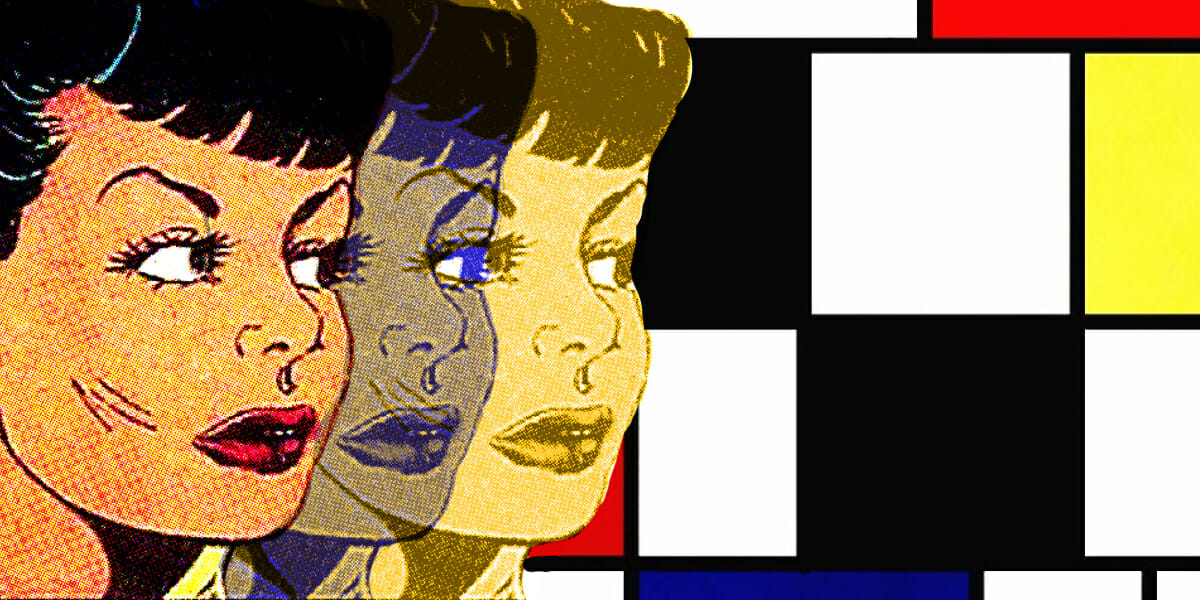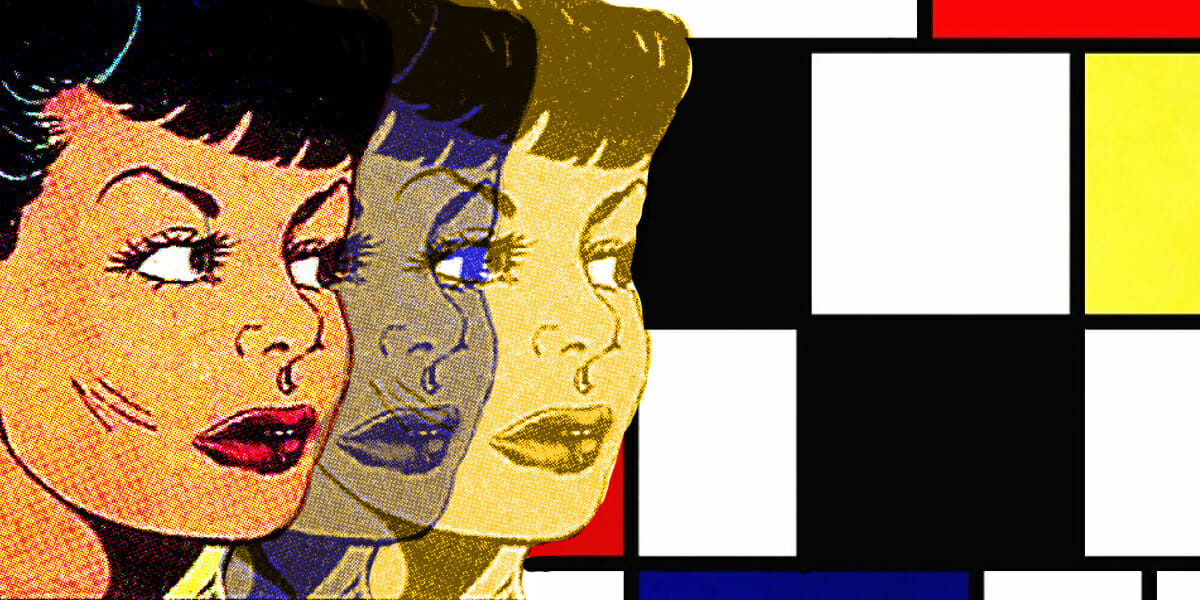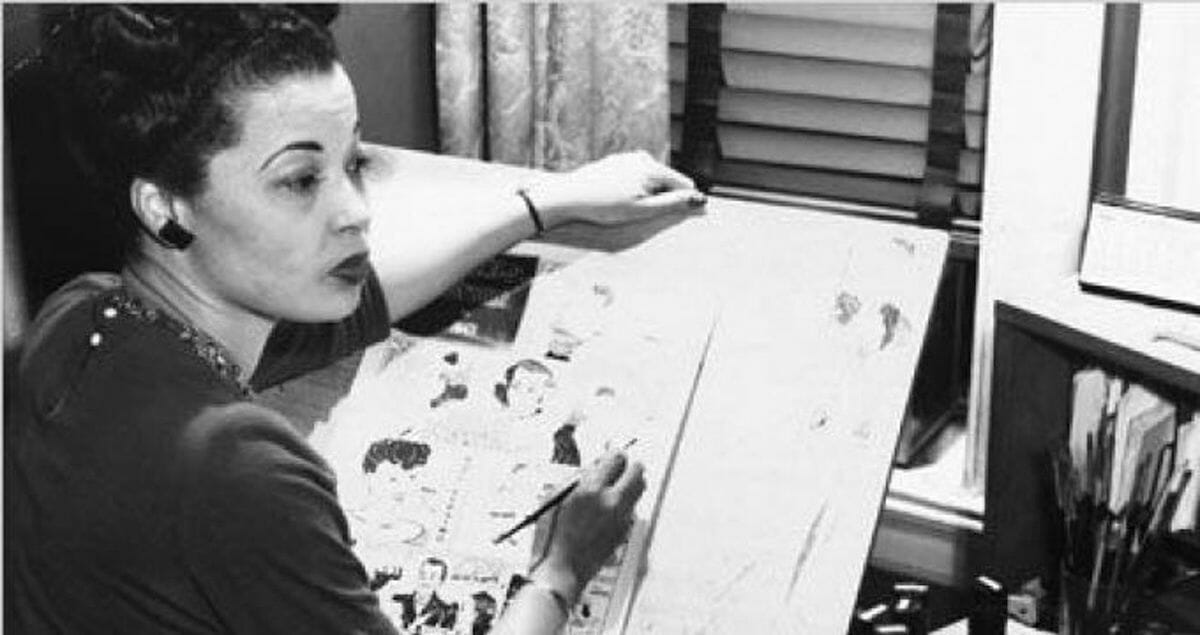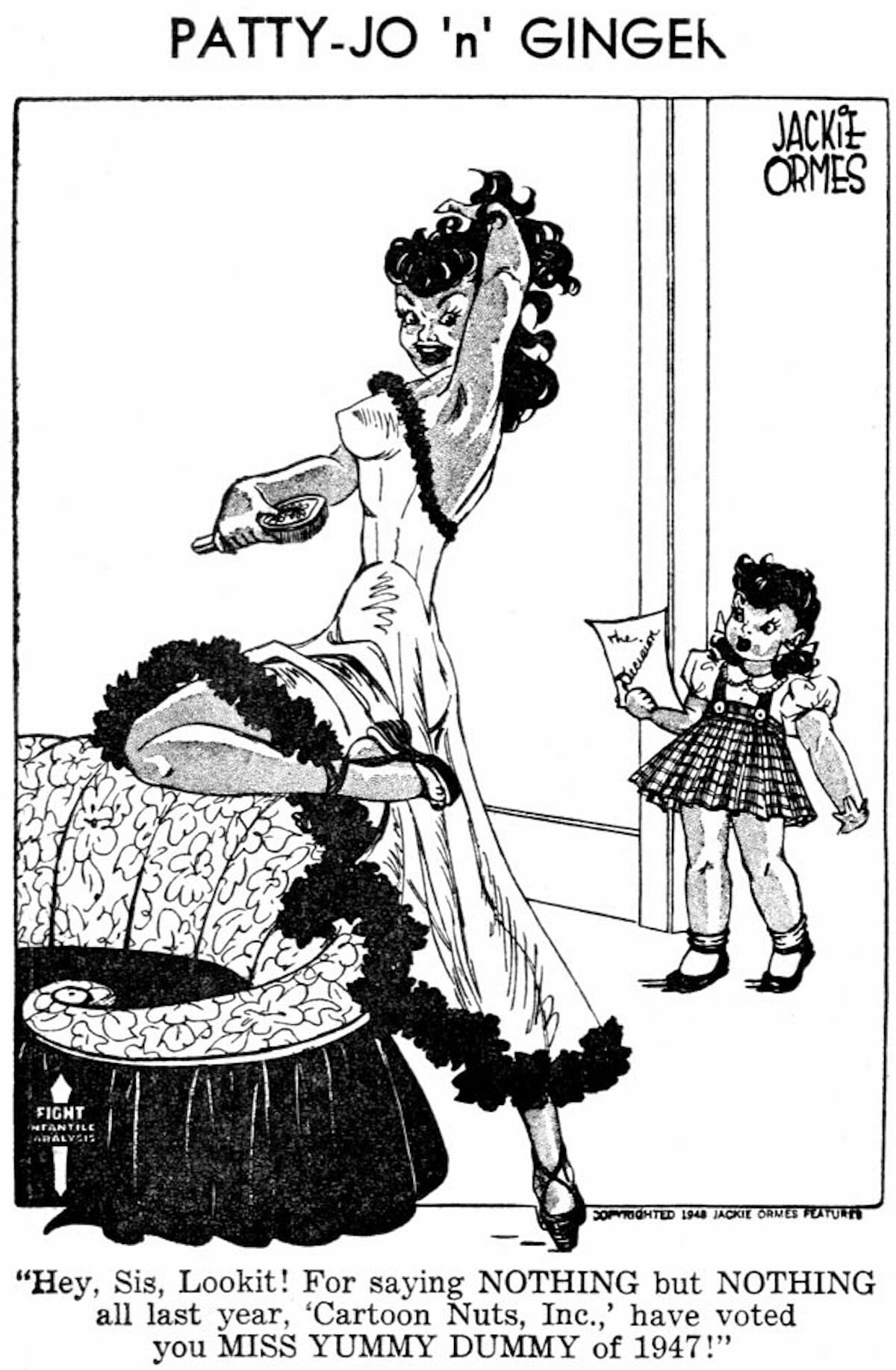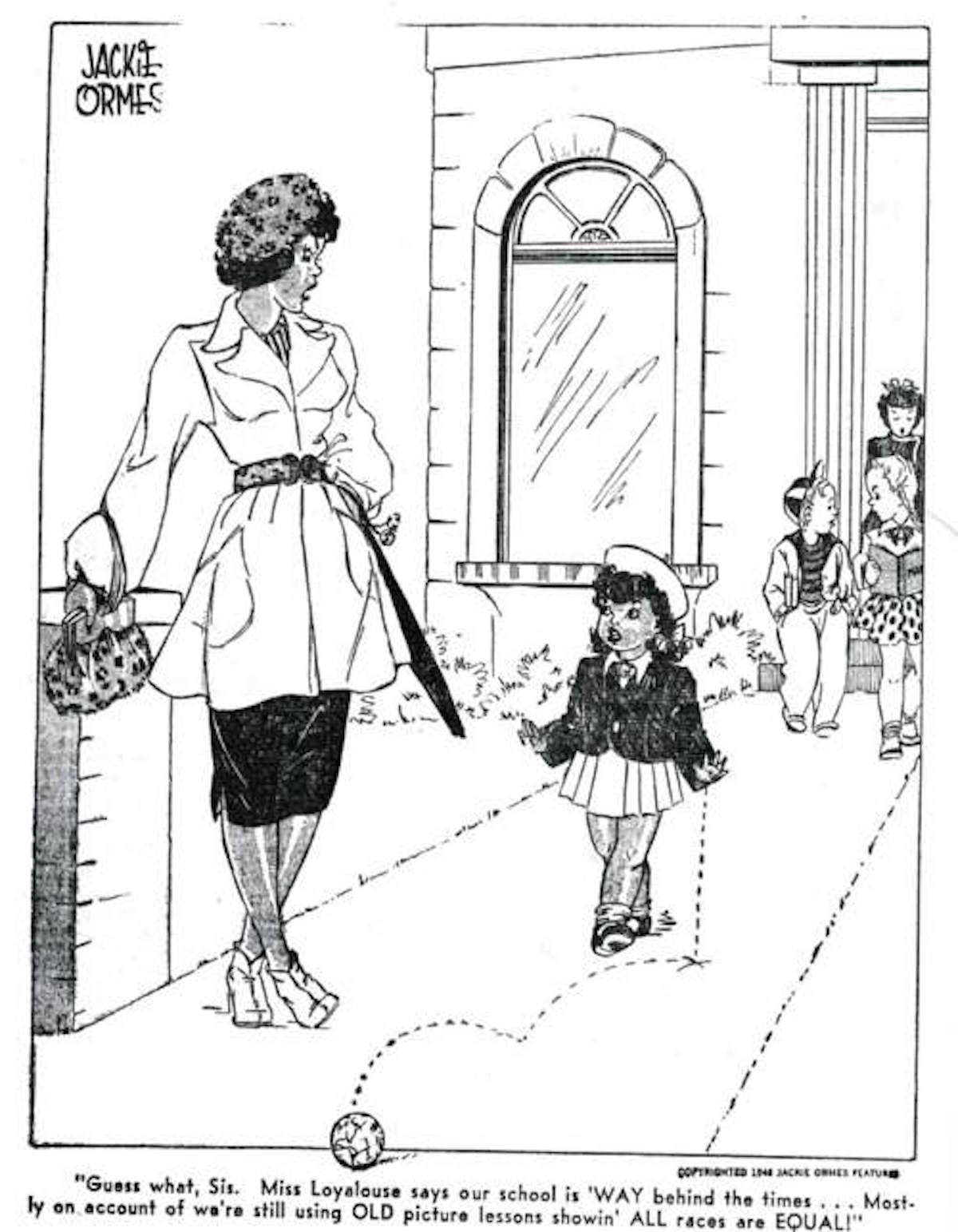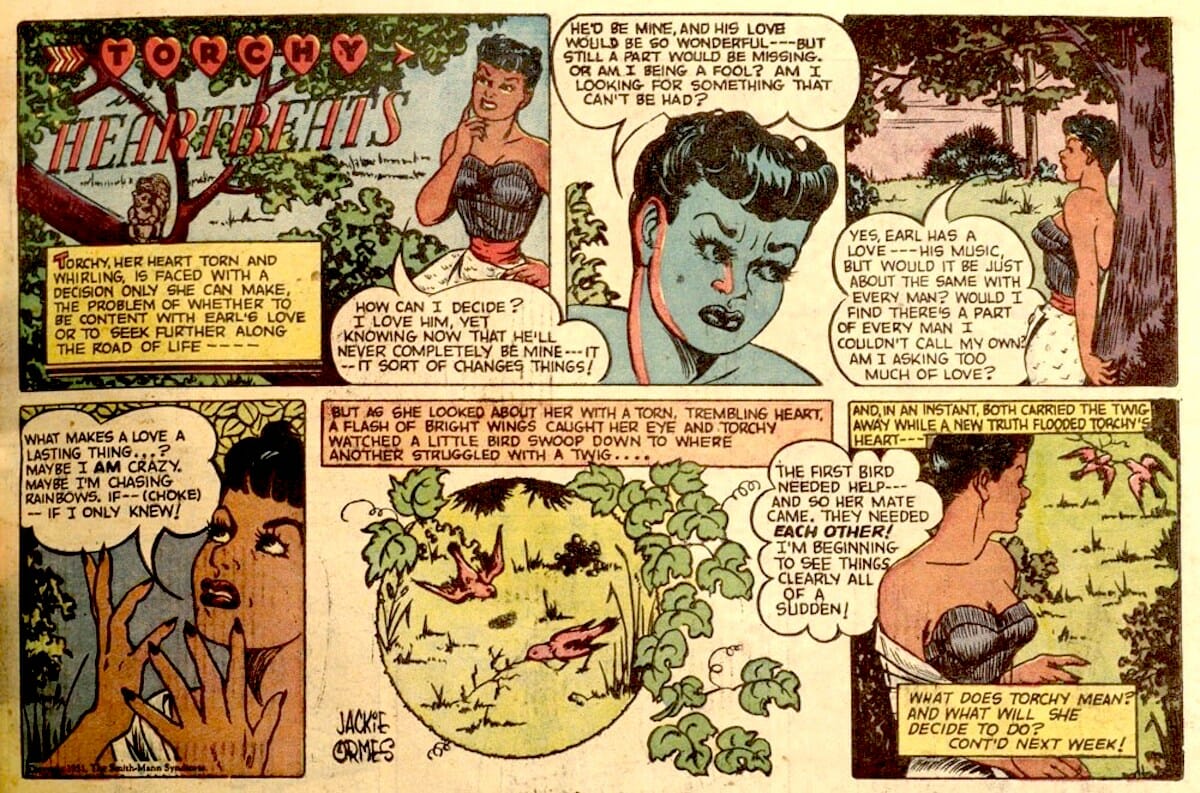Any comics fan that grew up within the past century can tell you that the medium got its start via newspaper strips, and that comics have been a staple of Sunday morning papers for several generations of readers of all ages. While many scoff at the idea of newspaper comics being lumped in with comic books — with paper strips being instead assumed to be an antiquated ancestor of the modern medium — the historical popularity of newspaper comics is nothing to thumb one’s nose at.
While newspaper comics are often noted for being entertaining — as well as the best part of your folks getting the weekend papers when you’re a kid — they have also always carried weight when offering a lens into current affairs and giving voice to otherwise frowned-upon opinions; who better to push back against the common wisdom safely than the modern day equivalent of the court jester? Few people, however, have been able to carry that weight in the same way as pioneering columnist and cartoonist Jackie Ormes.
Born in Pittsburg under the fabulous name Zelda Mavin Jackson, Ormes was known for drawing pictures and writing stories throughout her teen years as a high school student in Monongahela, Pennsylvania. Already the editor of her high school yearbook (which included her caricatures of teachers and fellow students), Ormes approached Robert Vann, editor of the Pittsburgh Courier — a primarily Black newspaper in the area — for a job. Still attending school, Ormes was offered her first gig by the Courier: covering one of Joe Lewis’ boxing matches. Although the assignment may have seemed somewhat odd for a young woman, especially in that era, not only did it light up Ormes’ career like a match, but also sparked a lifelong love of boxing for the rest of her life.
After graduating high school, Ormes proved to move quickly through the ranks of journalism, covering police beats, court cases, and human interest pieces for The Pittsburgh Courier, on top of her editing and proofreading work. While she was more than thrilled to have a job writing and “running around town, looking into everything the law would allow and writing about it”, as she famously put it, Ormes, honestly, wanted nothing more than to draw.
In 1937, Ormes’ dream came true when she debuted her first comic strip in the Courier — “Torchy Brown in Dixie to Harlem” — which ran in an additional thirteen city newspapers, giving her the coast-to-coast readership that made both the character and Ormes herself into something of an overnight comic sensation.
Dixie to Harlem centered around Torchy, a star-struck and incredibly savvy teen from Mississippi, whose own fame came after performing at Harlem’s famous Cotton Club — a mirror to the experience of many Black Americans of the era, who had moved to big Northern cities in search of success as part of the jazz boom of the 1930s. The Torchy Brown strip ran for three years, ending in 1940 when Ormes moved with her husband to Ohio in order to be closer to family.
Ohio wasn’t home for long, however, and two years later, the couple moved to Chicago, where Ormes would become a cornerstone of the Chicago Defender, one of the foremost Black newspapers of the time. It was there where she created the strip Candy, recounting the hijinx of a wisecracking housemaid of the same name, before bringing it to an end just four short months later.
Never ready to throw in the towel, Ormes was back at the Pittsburgh Courier within the same year, where she would go on to launch Patty-Jo ’n’ Ginger — a single-panel cartoon featuring Ginger, who was the picture of Black elegance of the era, and her little sister Patty-Jo, a precocious, acerbic, and unapologetically woke child who was ready to talk about McCarthyism and race at the drop of a hat. Aside from being incredibly funny and pointed for its time, Patty-Jo ‘n’ Ginger set the new example of Black women as being cultured, chic, and intelligent instead of the painful stereotypes seen in popular culture of the early 19th century.
Patty-Jo — who was never afraid to act as the voice of what readers were thinking regarding race and politics — became such a sensation that in 1947, Ormes contracted the Terri Lee company to produce a doll in her likeness. In stores just in time for Christmas that year, the Patty-Jo doll was the first Black doll to have a posh, upscale range of clothes — a stark contrast to the mammy and Topsy dolls as the only Black dolls previously available. The Patty-Jo doll sold by the thousands to children of all different backgrounds and is still a hot-ticket collectors item today.
Ormes’ themes of politics and race were not everyone’s cup of tea, though. In fact, from 1948 to 1958, the FBI was said to have kept 287 pages of notes kept on Ormes, who was known for appearing at a local bookstore where several “known Communists” were said to have gathered and spoken. This was, of course, not only a result of the incredible racism of the era that is still, in its own updated ways, prevalent among law enforcement and government entities, but the paranoia of the McCarthy era, wrought with paranoia and suspicion over anything — or anyone — who dared speak against the status quo. This did not deter Ormes, who continued to speak to millions through her unapologetic and effortlessly beautiful cartoons.
Beyond her skill at political writing, it should be noted that Ormes also had a significant gift for drawing high-fashion. It was a skill that she was truly able to give proper attention to when, in 1950, a national syndicate pushed for the reinvention of her Torchy Brown strip, called Torchy in Heartbeats. Having come a long way since her debut over a decade earlier, Torchy emerged once again as a stunning young Black woman with a knack for fashion, a hunger for adventure, and the desire for true love in the midst of a racist society.
Regardless of societal ills, Torchy in Heartbeats offered a vision of a beautiful and stylist Black female form that was still something to behold to the average reader. The strip’s popularity even lead to a secondary strip by Ormes — Torchy Togs — which featured Torchy as a paper doll, complete with an utterly stunning and entirely bespoke wardrobe.
Ormes retired in 1956 to focus on painting portraits and murals, as well as influencing many political figures and entertainers, advocating for many arts programs and African American History Museums, and presiding over the female auxiliary of the Chicago Urban League, the Urbanaides.
To say that Jackie Ormes took the cartooning world on her shoulders would be an understatement, and whether you’re here to celebrate her as a strong female creative figure, a prominent Black woman, an absurdly talented artist, an activist, or a total fashion dynamo, there’s no denying that we are better for getting to appreciate a creative force of her caliber in every aspect.
